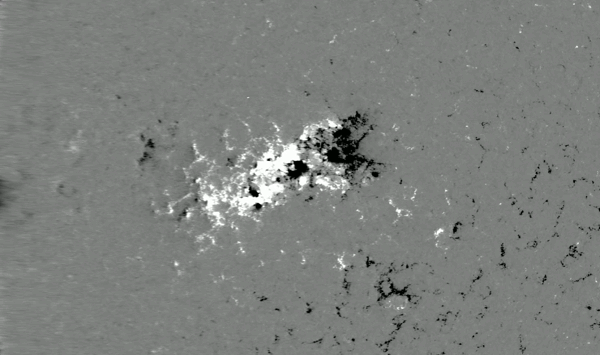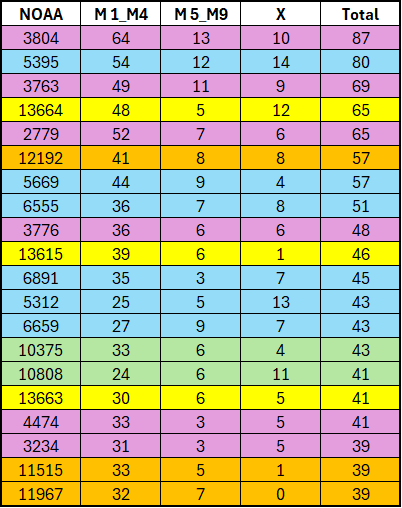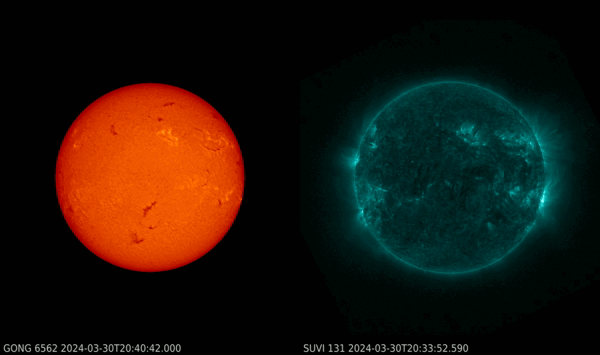NOAA 13615 transited the solar disk from 17 March until early 31 March. It reached a maximum size of nearly 9 times the total surface area of the Earth. Its maximum length of nearly 20 degrees corresponded to 220.000 km, which is more than half the average Earth-Moon distance. With the emergence of magnetic flux starting around 20 March, several magnetic delta structures were created that further developed during the transit of the region. The SDO/HMI images underneath show the region in white light and the magnetogram (comparison). The latter shows in white positive polarity magnetic fields (field lines emerging from the solar interior) and in black negative polarity magnetic fields (field lines returning to the solar interior). The clip covers the evolution of this active region from 19 March (12:00UTC) until 29 March (12:00UTC).


According to the preliminary NOAA reports, NOAA 13615 was a very active flare producer, generating no less than 46 M-class flares and an X-class event. Such large numbers for M-class events are unusual, and we have to go back already all the way to October 2014 with NOAA 12192 for similar numbers. A table can be found underneath, with a correction for the rescaling applied (NOAA/SWPC). In fact, there are only a dozen of sunspot groups that have produced around 40 M/X events, most of them appeared during SC21 (purple colour) and SC22 (blue colour). Usually, such prolific M-class factories also warrant an important number of X-class flares, in contrast to the single X-class event produced by NOAA 13615. NOTE: the figure underneath has been updated from the original on 21 May 2024. The colours indicate the respective solar cycles: green is for SC23, orange for SC24, and yellow for SC25.

Six (6) M-class events produced by NOAA 13615 reached an intensity in the M5 to M9 range. In extreme ultraviolet (EUV), these flares had a similar outlook and very often resembled a "pillar of light". The imagery underneath shows the M9.4 flare produced on 30 March while the region was located very close to the southwest solar limb. On the left are images in H-alpha by the GONG network, showing the Sun's inner atmosphere ("chromosphere") at "cool" temperatures ranging from about 10.000 to 20.000 degrees. On the right are EUV images taken by GOES/SUVI 131 showing the Sun's outer atmosphere ("corona") at temperatures of multi-million degrees. Similar clips are also available for the M7 flare on 20 March, the M6 flare on 28 March, and the X1 flare.






